Understanding how lions and leopards move through their environment is central to conserving these keystone carnivores and ensuring their coexistence with people. At Leopard Ecology & Conservation (LEC), predator movement research lies at the heart of our mission. By combining cutting-edge technology with indigenous ecological knowledge, we aim to reveal the patterns, pressures, and needs that shape the daily lives of lions and leopards in the Kalahari.
Why Movement Matters
Large carnivores are ecological architects: their movement patterns influence prey populations, vegetation dynamics, and even human livelihoods. Yet in the arid Kalahari, food and water resources fluctuate dramatically across seasons. Lions and leopards must adapt by ranging over vast territories, often far larger than those of their counterparts in resource-rich areas. Movement is not random, it is guided by the availability of prey, climatic conditions, reproductive cycles, territorial boundaries, and even interactions with neighbouring predators. Studying these movements provides insight into how carnivores survive in one of the harshest ecosystems on earth and helps us design strategies to conserve them.
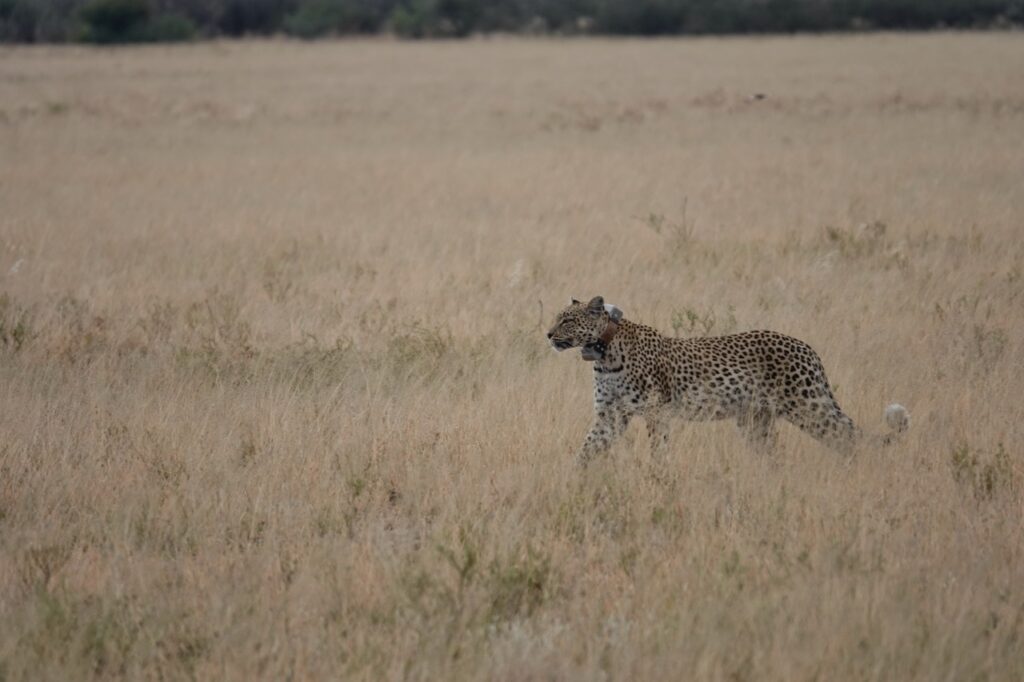
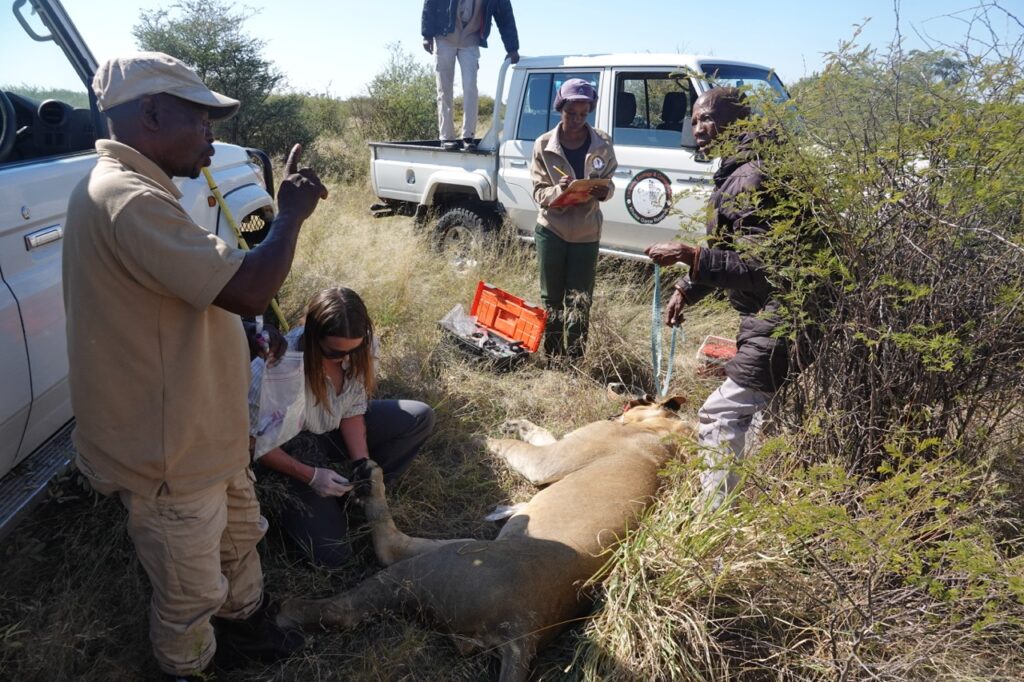
Harnessing Technology: GPS Collars
To unravel these movement patterns, LEC fits selected lions and leopards with state-of-the-art GPS collars. Each collar, worn for two to three years, records location fixes at fine temporal intervals, sometimes as frequently as every five minutes. These data provide an extraordinarily detailed picture of predator behavior, allowing researchers to track not only where animals go, but also how far they travel, when they rest, and where they hunt.
In collaboration with the Max Planck Institute of Animal Behaviour, LEC is helping to pioneer collars that incorporate magnetometer-based motion sensors, improving our ability to detect specific behaviors such as hunting, feeding, or resting. This partnership places our Kalahari study site at the forefront of wildlife telemetry, testing technologies under some of the most challenging field conditions.
Blending Science and Traditional Knowledge
LEC’s research approach is unique in its integration of indigenous San tracking knowledge. Skilled trackers validate GPS data by interpreting footprints, signs, and environmental context on the ground. For example, when GPS fixes indicate a cluster of movements suggesting a kill site, trackers investigate, reading tracks in the sand to confirm the predator species, the prey taken, and even the sequence of the hunt. This combination of modern science and traditional expertise provides unparalleled accuracy and ecological insight.
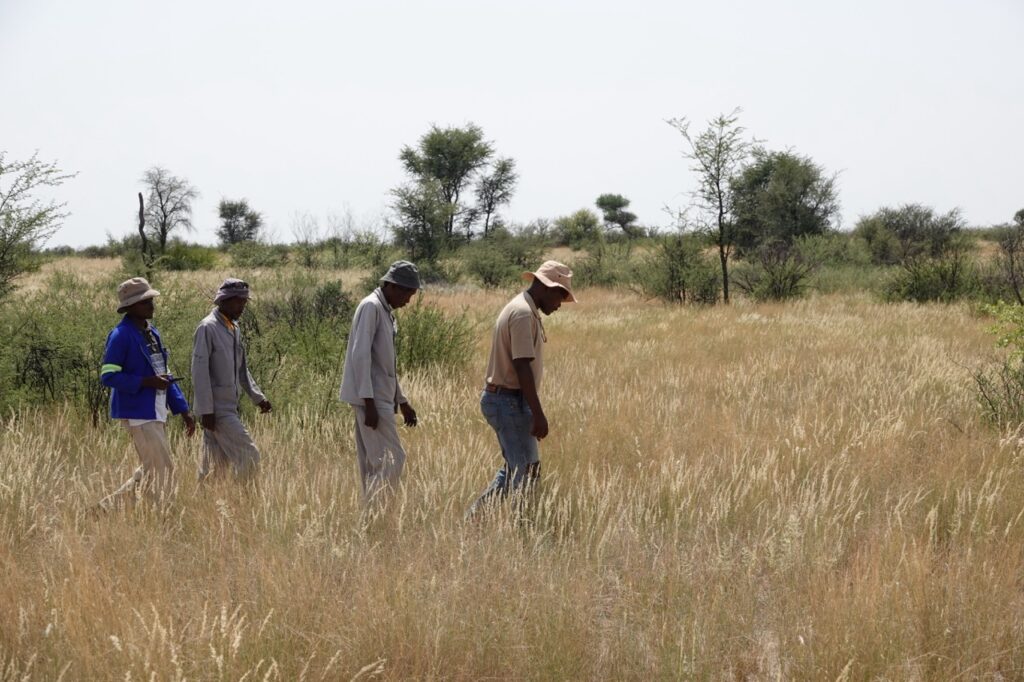
What the Data Reveal
The long-term collaring program has generated a robust database now used by researchers and graduate students worldwide. Key findings include:
- Extraordinary Home Ranges: LEC studies estimate that resident leopards in the Kalahari can have home ranges exceeding 950 km², with some males covering nearly 3,000 km²; among the largest recorded for the species anywhere. These ranges often overlap extensively, highlighting how resource scarcity shapes territoriality.
- Seasonal Movement Patterns: Female leopards are more mobile after the rainy season and near water sources, reflecting shifts in prey distribution. Their movement increases during cooler times of day, consistent with energy-efficient nocturnal habits adapted to the Kalahari’s extreme temperature swings.
- Daily Distances: Recent lion tracking studies validated through field “long follows” showed that Kalahari lions average around 17 km per day. This figure closely aligns with earlier desert lion studies and emphasizes the endurance required to survive in sparse landscapes
- Territorial Behavior: Males patrol their territories with straighter, longer paths than females, reinforcing their role in defending boundaries and securing access to mates.
Responding to Human-Wildlife Conflict
One of the most immediate applications of movement research is mitigating conflict with people. When GPS data show collared predators approaching livestock areas, LEC can alert communities and deploy rapid-response teams. This proactive approach reduces losses for farmers and builds trust between conservationists and local residents. In 2024, GPS collars combined with community engagement allowed LEC to identify predation hotspots, explain patterns to farmers, and promote better livestock management practices
Beyond the Collars: Habitat Selection
Collar data do more than map movements, they allow predictive modeling of habitat selection. By integrating telemetry with kill site investigations and satellite-derived environmental data, LEC researchers are uncovering which habitats lions and leopards prefer under different conditions. For example, proximity to waterholes, prey density, vegetation cover, and temperature gradients all influence where predators spend their time. These insights inform land-use planning, ensuring that critical habitats and corridors remain protected amid expanding human activity.
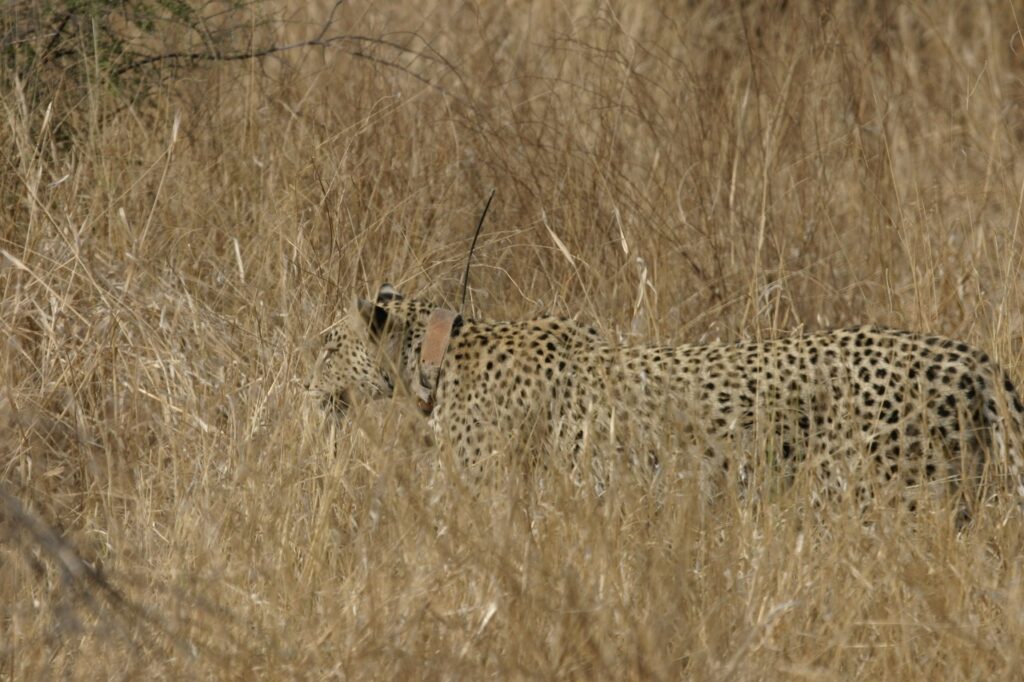
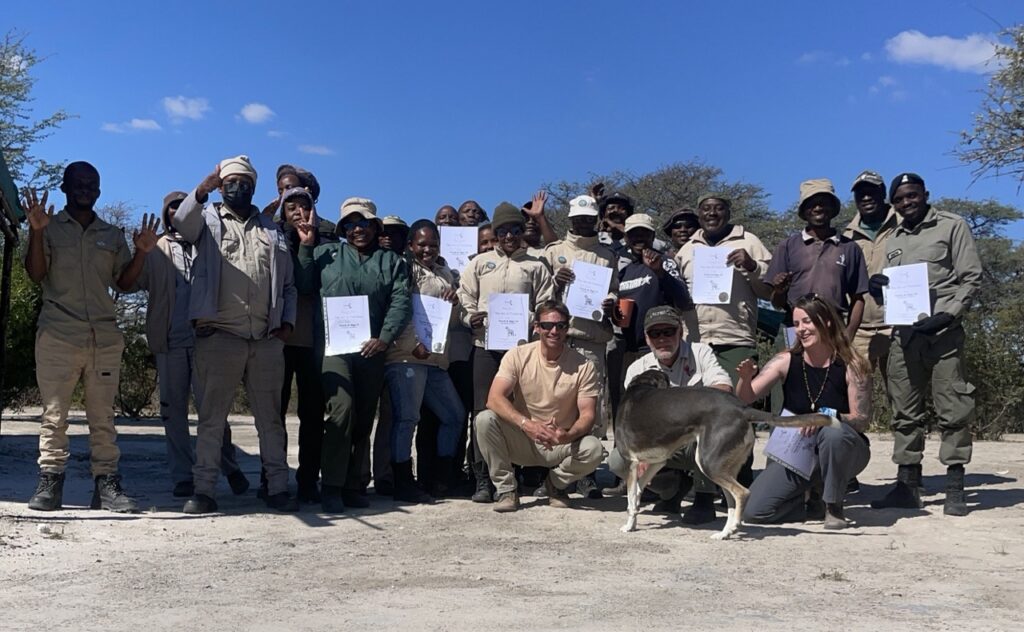
Training and Capacity Building
Another vital aspect of this project is knowledge transfer. In 2024, LEC trained Department of Wildlife and National Parks (DWNP) officers in GPS-collar programming and geo-fencing technology. Local trackers, once only traditional knowledge holders, are now proficient in using handheld devices and digital platforms like CyberTracker to log data in real time. By empowering local people, LEC ensures the sustainability of conservation beyond the lifespan of any individual project.
Conservation Impact
The implications of this research stretch far beyond academic knowledge. Long-term telemetry data feed directly into Botswana’s wildlife management strategies, helping decision-makers balance predator conservation with community development. For instance, understanding lion ranging behavior informs where livestock grazing areas can be placed to reduce conflict. Similarly, recognizing how leopards shift their ranges between wet and dry seasons helps anticipate periods of higher livestock predation risk.
Moreover, LEC’s findings contribute to the global scientific community, offering some of the most detailed data available on carnivore ecology in arid systems. These insights are invaluable for comparative studies and for guiding conservation efforts in similar ecosystems across Africa.
A Model for Coexistence
Ultimately, the Predator Movement and Habitat Selection project exemplifies LEC’s broader vision: a Kalahari where people and predators coexist sustainably. By following lions and leopards across vast landscapes, decoding their choices, and applying this knowledge to real-world challenges, we are building a foundation for long-term coexistence. The fusion of technology, tradition, and community engagement makes this project not just a scientific study, but a model for how conservation can thrive in the 21st century.
